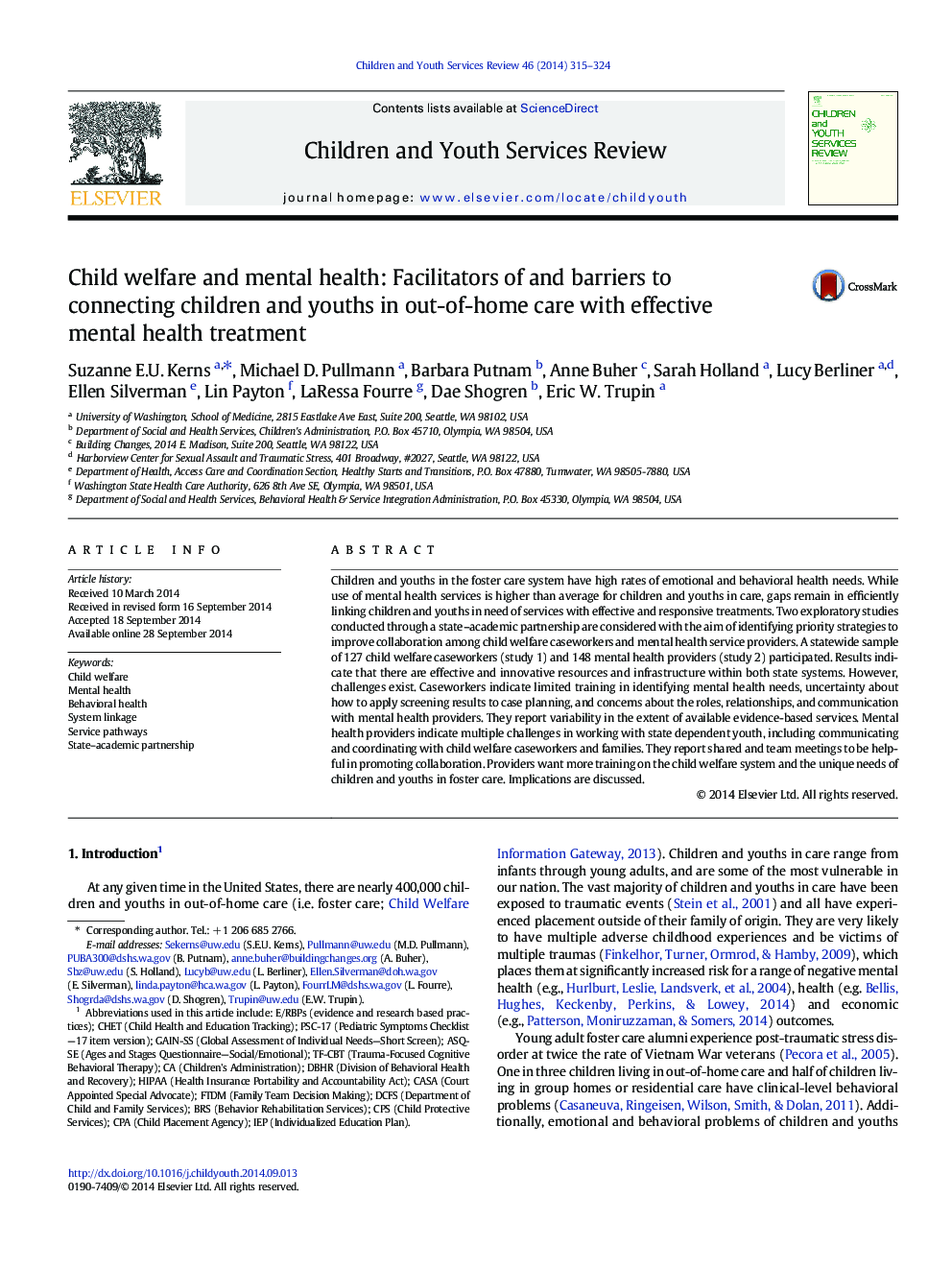| Article ID | Journal | Published Year | Pages | File Type |
|---|---|---|---|---|
| 6834210 | Children and Youth Services Review | 2014 | 10 Pages |
Abstract
Children and youths in the foster care system have high rates of emotional and behavioral health needs. While use of mental health services is higher than average for children and youths in care, gaps remain in efficiently linking children and youths in need of services with effective and responsive treatments. Two exploratory studies conducted through a state-academic partnership are considered with the aim of identifying priority strategies to improve collaboration among child welfare caseworkers and mental health service providers. A statewide sample of 127 child welfare caseworkers (study 1) and 148 mental health providers (study 2) participated. Results indicate that there are effective and innovative resources and infrastructure within both state systems. However, challenges exist. Caseworkers indicate limited training in identifying mental health needs, uncertainty about how to apply screening results to case planning, and concerns about the roles, relationships, and communication with mental health providers. They report variability in the extent of available evidence-based services. Mental health providers indicate multiple challenges in working with state dependent youth, including communicating and coordinating with child welfare caseworkers and families. They report shared and team meetings to be helpful in promoting collaboration. Providers want more training on the child welfare system and the unique needs of children and youths in foster care. Implications are discussed.
Related Topics
Health Sciences
Medicine and Dentistry
Perinatology, Pediatrics and Child Health
Authors
Suzanne E.U. Kerns, Michael D. Pullmann, Barbara Putnam, Anne Buher, Sarah Holland, Lucy Berliner, Ellen Silverman, Lin Payton, LaRessa Fourre, Dae Shogren, Eric W. Trupin,
